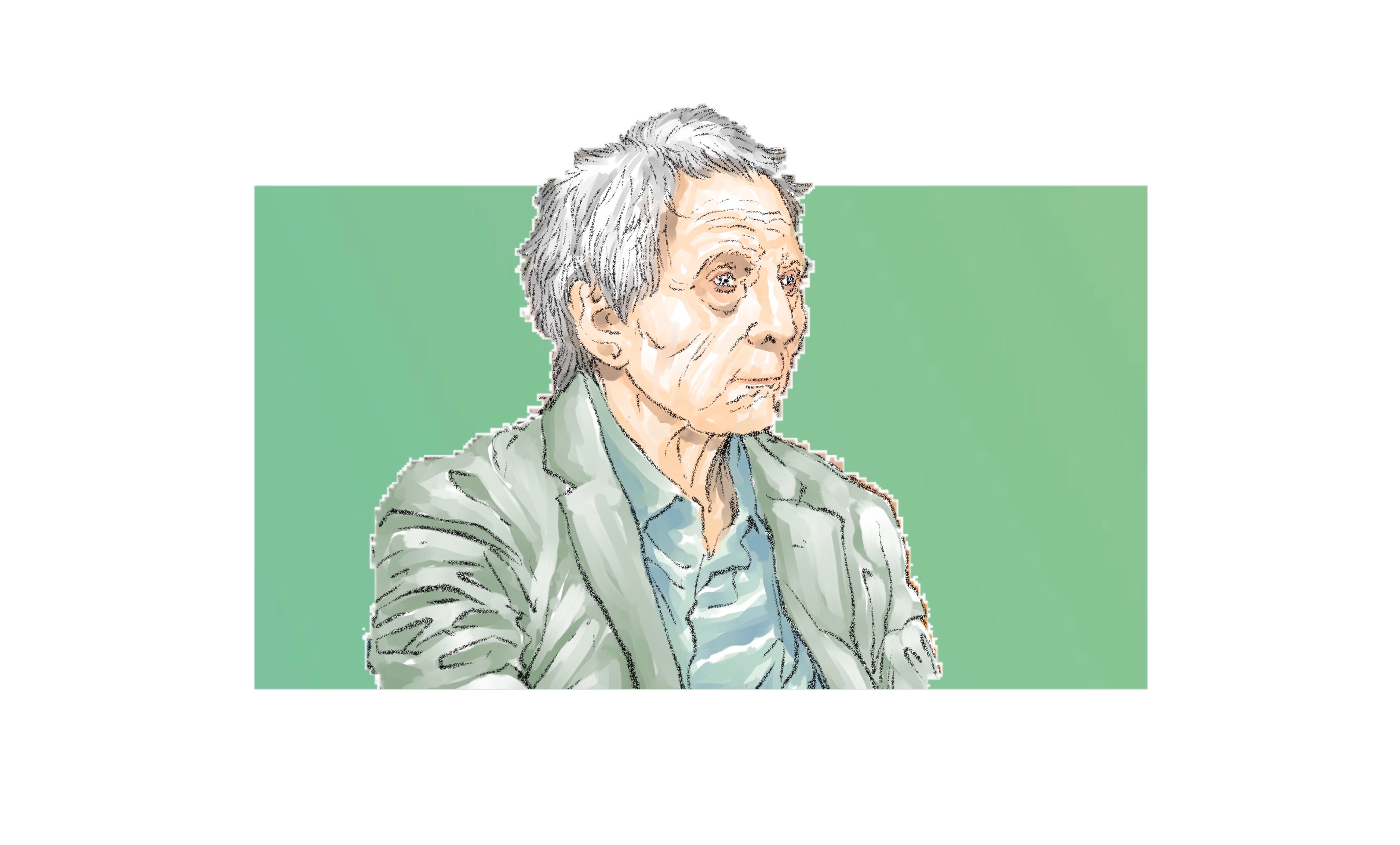A long trial can breed moments of unanticipated intimacy.
CRIME STORY has been reporting on the Durst pre-trial hearings for nearly a year now, and it’s safe to say that a strained familiarity has developed between all concerned parties. There are nodding encounters in courthouse cafeteria lines and muttered asides in crowded elevators.
It’s also inevitable that over the course of a lengthy court case, you will share a restroom with someone from the trial. (This probability is enhanced by the fact that all of the CRIME STORY reporters covering the trial so far have been male; men also make up the majority of the legal teams, with one crucial exception to be discussed below). These encounters can be awkward, but in a very real sense they’re completely appropriate. Because it’s in restrooms that we are reduced to our animal selves. What the courtroom is to our aspirations toward evolved, reasoned civility, the restroom is to our undeniable biological realities. So exchanging small talk with defense attorney Chip Lewis in the Airport Courthouse’s cramped 8th floor men’s room is not only business as usual, it’s proof of what Friedrich Nietzsche called our “human, all-too-human” capacity to be both angels and mere flesh simultaneously.
Restrooms. Remember them.
*
In Department 81, the two legal teams cluster in the gap between the defense table and the banked jury enclosure, considering juror seating for Robert Durst’s upcoming trial for the murder of Susan Berman. The attorneys count and confer and point and nod, much like an extended family planning a wedding reception or bar mitzvah. They stand at awkward angles to one another, attentive to the practical demands of a clickbait murder trial, but also anxious that their individual opinions not be overlooked.
At issue this January morning is where to seat the twelve alternate jurors. Judge Mark E. Windham’s Department 81 is wood-paneled and cozy, with gallery seating for roughly 60 observers. It’s undeniable that the courtroom is too small for a trial of this magnitude — in the interests of space, video cameras and technicians will be permitted only for the reading of the verdict and opening and closing arguments. (CRIME STORY will audio record the entire trial and air a trial summary and analysis podcast every week).
The raised jury enclosure has 18 fixed seats, which begs the question, where to put the remaining six alternates? Folding chairs could be placed in front of the enclosure, but then the jurors might crowd the path to the witness box. The People suggest positioning extra chairs in a line along the gallery side of the enclosure — but will the juror at the very back be able to see the wall-mounted video monitor? There’s a psychosocial component to the discussion, a very real concern about violating the limits of jurors’ personal boundaries. How close is too close? Over the course of a lengthy court case, when will cheek-to-jowl proximity begin to grate?
*
After two extended discussions in Judge Windham’s chambers, the legal teams take their seats and Robert Durst is helped from the in-custody holding area. Durst’s white hair has been trimmed again and the scar on the right side of his scalp is raised and livid. Durst waves to a familiar face in the gallery, then sits. David Z. Chesnoff, sitting kitty-corner to Durst at the defense table, leans over to make eye contact — Durst acknowledges him with a muttered hello.
Judge Windham moves briskly through the business at hand. The Court accepts the stipulation before it, pertaining to the videotaped testimonies of potential witnesses (otherwise known as “conditional examination witnesses”) and the circumstances governing their presentation to the jury. Next, a defense motion in limine to exclude mention of Kathie Durst’s abortion is denied by the Judge. Finally, Deputy DA John Lewin rises to announce that the People have arrived at an agreement with potential witness Douglas Oliver. As reported in Robert Durst Stares into the Camera (Durst 6), Oliver is a longtime Durst associate who is reluctant to appear as a witness for the prosecution — and was unabashed about giving Lewin the stink-eye when confronted about this when he sat as a visitor in the gallery last November. Lewin informed the Judge that the New York-based Oliver had agreed to remain “on call” for a possible appearance. Acknowledging this, Judge Windham noted that if Oliver failed to honor this agreement, he would order a “writ of body attachment,” initiating a procedure to bring a person who has been found in civil contempt (in this hypothetical, Oliver) before the court.
The day’s proceedings concluded, Judge Windham thanks the opposing parties. “I appreciate your succinct arguments today,” he informs them. It’s an anodyne conclusion to a vanilla-wafer day.
*
Another moment of unanticipated intimacy occurs at a pretrial hearing a few days later.
The court has been waiting for nearly two hours for Durst to be delivered by the county jail transportation team, and he enters the courtroom from the in-custody area in apoplectic rage. “I asked for 32/30s,” he complains of his pants, “and these are 31/30s!” His eyes flit angrily over the attorneys standing to greet him: Dick DeGuerin, David Chesnoff, Chip Lewis, Donald M. Re and behind them, Stephanie Ames.
ROBERT DURST: WHERE’S STEPHANIE?
STEPHANIE AMES: RIGHT HERE.
ROBERT DURST: I SPECIFICALLY TOLD YOU 32-30. THESE ARE 31-30S AND I AM STRANGLING IN THEM…
Durst’s choice of words and palpable anger are breathtaking, considering he stands accused of killing a woman at close range and has admitted to assaulting his first wife Kathie on several occasions. It’s a lightning fast outburst, offering an unexpected window onto this man’s percolating rage.
Ames is in the midst of apologizing when David Chesnoff chimes in with a calming, “Roberto.”
Durst, still miffed, takes his seat, as Chesnoff attempts to further defuse the situation. Tilting his head at Ames, he teases: “What kind of a dresser are you?”
*
Stephanie Ames has been practicing law for over twenty years; her DTLA firm advertises an expertise in “all variety of criminal matters including DWI/DUI; mail fraud, securities fraud, health care fraud, and other white collar cases; assault/burglary/robbery and other violent offenses; drug/controlled substances cases.”
During almost a year of pre-trial hearings, however, Ames has acted primarily as Durst’s wardrobe manager. This only serves to reaffirm the astonishing financial and manpower resources Robert Durst continues to have at his disposal; Durst is paying a seasoned attorney her hourly fees just to make sure he has the correct wardrobe.
The arrangement has had its hiccups. Before a March 2019 hearing, Durst could be heard in the interview room shouting at Ames about the clothing choices he was being offered. Ames protested: “I brought the white shirt… and the blue jacket!” The exchange was so loud, the court reporter crossed the court room and rapped on the door to warn the two that they could be heard. Ames emerged looking flustered.
*
Weeks later, I’m huddled with CRIME STORY publisher, Kary Antholis, and a courthouse exhibits custodian in an absurdly small room in the Criminal Court Clerk’s office.
The three of us are listening to Robert Durst’s controversial “hot mic” confession, captured by filmmakers Andrew Jarecki and Marc Smerling in the course of an interview with Durst for their HBO documentary, The Jinx. As explored in Kary’s CRIME STORY article and podcast (Episode 89: Robert Durst Admits “Killed Them All” Recording is “True and Accurate”), Durst broke away from the interview crew to use the bathroom. Neither Durst nor the filmmakers were aware that the wireless lavalier microphone Durst was wearing when he left the room was still live, or “hot.”
What stands out in the resulting recording is the abrupt shift in tone Durst goes through — getting up from the interview, he’s relaxed, convivial. What the transcript doesn’t convey is Durst’s verbal emphases and lightness of delivery. He’s at ease, relishing the humor of the situation — is this the bathroom, or the broom closet?
ROBERT DURST: SOMEPLACE, IS MY BAG. I — I AM GOING TO GO USE THE RESTROOM — WHICH IS RIGHT HERE.
MALE SPEAKER: OKAY.
ROBERT DURST: AND I — EXCEPT THAT IT’S LOCKED.
ANDREW JARECKI: THE BATH — ARE YOU GOING TO THE BATHROOM?
MALE SPEAKER: OH, IT’S THIS —
ROBERT DURST: OH, SOMEONE’S IN THE BATHROOM.
MALE SPEAKER: OH, OKAY.
ROBERT DURST: OR MAYBE THIS IS THE BATHROOM.
MALE SPEAKERS: YEAH, THAT’S IT —
ROBERT DURST: YOU’RE RIGHT. THIS IS THE BATHROOM.
Once alone, however, Durst breaks into a muttered stream-of-consciousness rant. It’s almost as if he’s lowered a mask, as he shifts from public to private mode.
“There it is,” he whispers almost as soon as the bathroom door is shut. “You’re caught.” For more than six minutes, interspersed with various gastrointestinal squeaks, gurglings, flushings and splashings, Durst worries over his predicament, uttering his now-infamous confession: “Killed them all, of course.”
It’s unusual to listen in on a stranger’s bathroom break from start to finish. Huddled in the exhibits room, the three of us are ear-witnesses to the total baring of a man’s body and mind, to the process of his intimate self being suddenly externalized.
Which is, of course, one of the many truths to be encountered in a restroom.
*
Eleven months of pre-trial hearings. A projected five month jury trial. In the case of the People vs. Robert Durst, unanticipated intimacies will accumulate. Reporters, legal teams, and jurors, strangers for the most part, will regularly be placed in surprising, uncomfortable proximity to one another. The intended outcome is justice. The unintended… What is Robert Durst’s compulsion to make inculpatory statements during unguarded moments but a desperate search for connection, an urge to overshare? The most powerful weapon in the People’s case against Robert Durst… may be Robert Durst himself.
Crime Story has previously published eight installments in a series of articles about the hearings leading up to the murder trial of Robert Durst. You may click on the hyperlinked titles to read Two Hearings: Robert Durst and Armon Nelson, While Robert Durst Flips Through Photos, Robert Durst Fades Away, Robert Durst and the Inequity of Judicial Time, Robert Durst’s Warrior in Court, Robert Durst Stares into the Camera, Robert Durst’s Lawyer Gets a Compliment, and Robert Durst: You Can’t Unring the Bell. We also published news stories entitled Robert Durst Admits Writing “Cadaver Note” and “Dig Note” andRobert Durst Admits “Killed Them All” Recording is “True and Accurate” and presented a podcast discussion of the case here.






